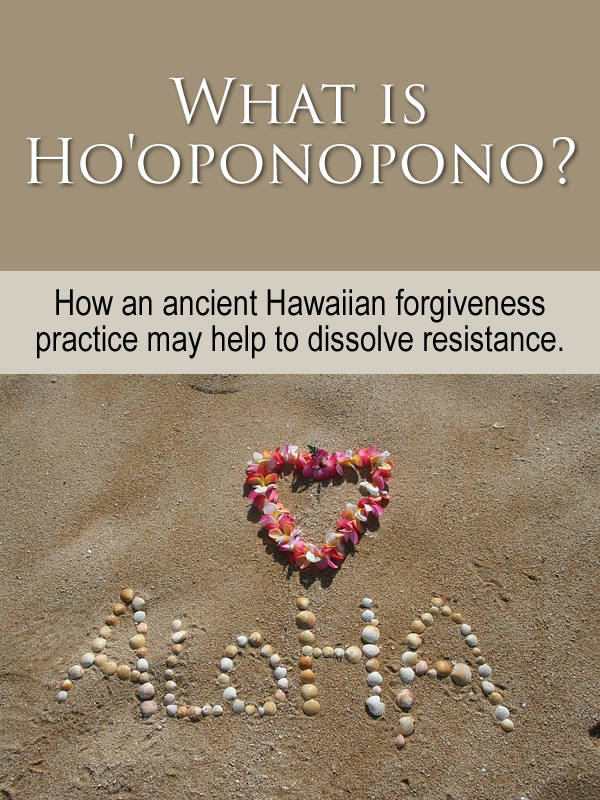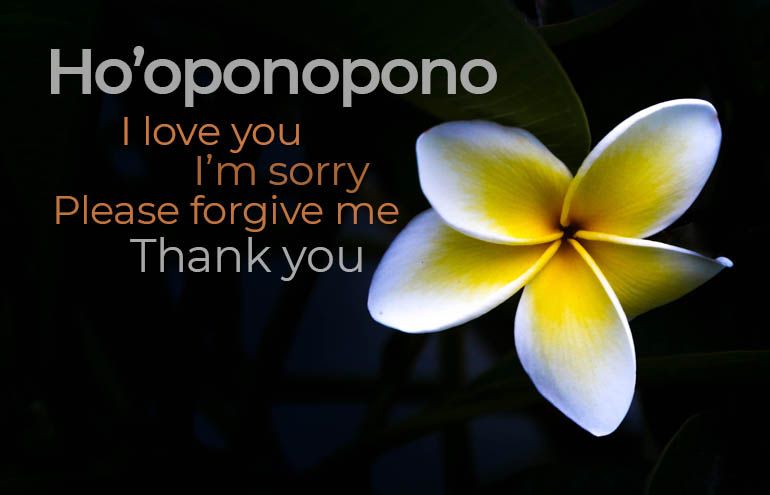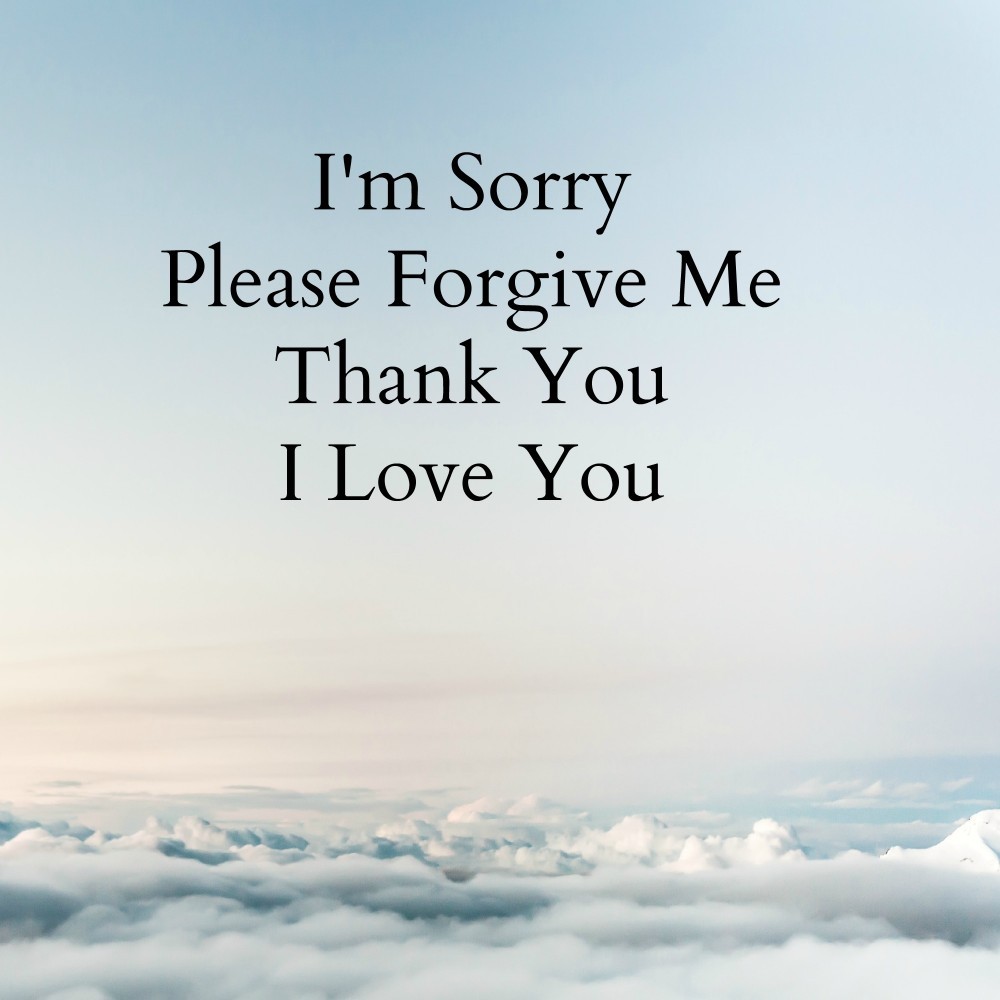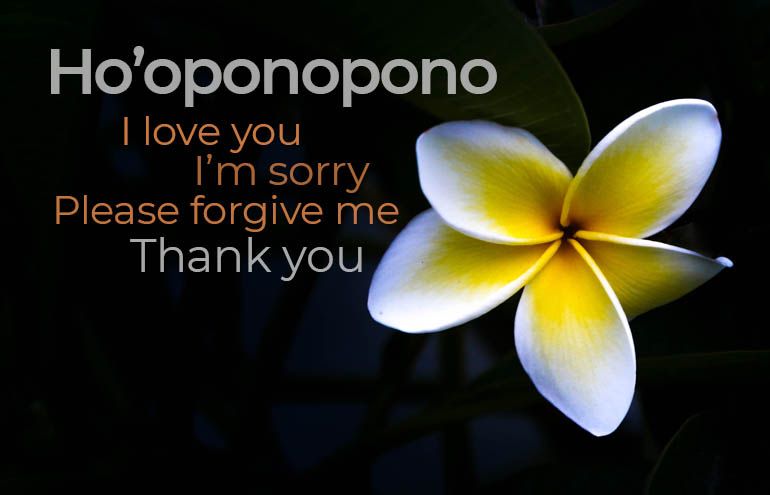Have you ever wondered how guilt is perceived in the practice of Ho’oponopono? This ancient Hawaiian healing tradition offers a unique perspective on guilt and its role in our lives. Instead of viewing guilt as a burden or a negative emotion, Ho’oponopono sees it as an opportunity for self-reflection and growth. By acknowledging our guilt and taking responsibility for our actions, we can release negative energy and restore balance within ourselves and our relationships. In this article, we will explore how Ho’oponopono views the concept of guilt and how it can be used as a powerful tool for healing and transformation.
Understanding Ho’oponopono
Origins and principles of Ho’oponopono
Ho’oponopono is an ancient Hawaiian practice that focuses on forgiveness, reconciliation, and healing. It originated from the cultural and spiritual practices of the native Hawaiians, who believe in the interconnectedness of all beings and the power of forgiveness to restore harmony and balance in relationships and communities. The principles of Ho’oponopono revolve around taking responsibility for one’s actions, seeking forgiveness, and letting go of guilt and negative emotions.
A brief overview of the practice
Ho’oponopono is often described as a practice of reconciliation and forgiveness. It involves acknowledging and accepting responsibility for one’s actions or the collective actions of a group or society, seeking forgiveness from oneself or others, and releasing guilt and negative energy through repentance, gratitude, and love. The practice emphasizes the power of confession and repentance as a means of healing and transformation. It is a process of deep inner reflection and self-forgiveness aimed at restoring balance and harmony within oneself and in relationships with others.
Basic beliefs and concepts in Ho’oponopono
At the core of Ho’oponopono are several fundamental beliefs and concepts. Firstly, it emphasizes the idea that everything is interconnected, and our actions have an impact on the world around us. It recognizes that our thoughts, beliefs, and emotions can create disharmony and imbalance, not only within ourselves but also in our relationships and communities. Secondly, Ho’oponopono teaches that taking responsibility for our actions and seeking forgiveness is essential for healing and restoring harmony. It encourages individuals to recognize their role in creating both positive and negative experiences and to actively work towards resolving conflicts and restoring balance. Lastly, Ho’oponopono emphasizes the power of love, gratitude, and forgiveness as transformative forces that can bring about inner peace and healing.
The Concept of Guilt in Ho’oponopono
Guilt as an obstacle to inner peace
In Ho’oponopono, guilt is viewed as a significant obstacle to experiencing inner peace and harmony. When we hold onto guilt, it weighs us down and prevents us from living fully in the present moment. Guilt keeps us stuck in the past, constantly replaying our mistakes and shortcomings. It creates a negative cycle of self-blame, self-judgment, and self-punishment, preventing us from embracing self-love, acceptance, and forgiveness.
Recognizing the role of guilt in personal healing
Ho’oponopono recognizes that guilt plays a crucial role in personal healing and growth. By acknowledging and accepting our feelings of guilt, we can begin to understand the root causes of our actions and behaviors. Guilt serves as a teacher, highlighting areas where we may need to make amends, seek forgiveness, and release negative energy. It presents an opportunity for self-reflection and transformation.
Shifting the perspective on guilt in Ho’oponopono
In Ho’oponopono, guilt is not seen as something to be condemned or ignored but rather as an invitation to take responsibility for our actions and create positive change. By shifting our perspective on guilt, we can view it as a catalyst for growth and healing. Instead of dwelling on guilt and allowing it to hold us back, we can approach it with compassion, forgiveness, and a willingness to learn. Ho’oponopono offers tools and techniques to release guilt and embrace personal empowerment and inner peace.

Taking Responsibility and Letting Go
Accepting responsibility for one’s actions
Ho’oponopono emphasizes the importance of taking responsibility for one’s actions, both past and present. By acknowledging the impact of our choices and behaviors on others, we can begin the process of healing and reconciliation. Taking responsibility requires honesty, humility, and a willingness to confront the consequences of our actions. It involves acknowledging our mistakes, expressing remorse, and actively seeking forgiveness.
Understanding the power of forgiveness
In Ho’oponopono, forgiveness is viewed as a powerful tool for healing and transformation. By seeking forgiveness from ourselves and others, we can release the negative energy associated with guilt and create space for love, compassion, and understanding. Forgiveness is not about condoning or forgetting the actions that led to guilt, but rather about letting go of resentment, anger, and judgment. It is a process of releasing the burden of guilt and embracing inner freedom and peace.
Releasing guilt through the practice of Ho’oponopono
Ho’oponopono offers practical techniques for releasing guilt and finding inner peace. It involves a process of repentance, forgiveness, gratitude, and love. Through the repetition of mantras, affirmations, and prayers, individuals can clear their minds and hearts of negative emotions and thoughts. The practice encourages individuals to let go of guilt through self-forgiveness, forgiveness of others, and a deep sense of gratitude for life’s lessons. By actively engaging in the practice of Ho’oponopono, individuals can cultivate a mindset of peace, love, and acceptance.
Clearing Guilt through Self-Forgiveness
The importance of self-forgiveness in Ho’oponopono
Self-forgiveness is a crucial aspect of Ho’oponopono. It involves acknowledging our own humanity and inherent fallibility. We all make mistakes, and holding onto self-blame and guilt only perpetuates a cycle of negativity and self-punishment. Self-forgiveness requires compassion, understanding, and a willingness to release the past and embrace the present moment. By forgiving ourselves, we open the door to personal growth, healing, and self-love.
Letting go of guilt through repentance and gratitude
In Ho’oponopono, guilt can be cleared through the practices of repentance and gratitude. Repentance involves acknowledging our actions or behaviors that may have caused harm and expressing genuine remorse. It is about making amends and committing to positive change. Gratitude, on the other hand, allows us to shift our focus from guilt to appreciation for the lessons learned and the opportunities for growth. By consciously practicing repentance and gratitude, we can release guilt and create space for healing and transformation.
Honoring the healing journey through self-love and acceptance
Ho’oponopono recognizes the importance of self-love and acceptance on the path to healing guilt. When we love and accept ourselves unconditionally, we create a nurturing and supportive environment for personal growth and transformation. Self-love involves treating ourselves with kindness, compassion, and forgiveness. It requires us to let go of self-judgment, embrace our imperfections, and celebrate our strengths. By honoring our healing journey and cultivating self-love, we can release guilt and experience inner peace and wholeness.

Ho’oponopono and Collective Guilt
Addressing collective guilt and responsibility
Ho’oponopono extends beyond individual guilt and addresses collective guilt and responsibility. It recognizes that our actions as a society can create harm and disharmony on a larger scale. By acknowledging our collective responsibility, we can work towards healing and reconciliation at both individual and societal levels. Ho’oponopono encourages individuals to actively engage in activities that promote justice, equality, and compassion for all.
Healing the collective conscience through Ho’oponopono
Through the practice of Ho’oponopono, the collective conscience can be healed and transformed. By taking responsibility for our collective actions and seeking forgiveness from others, we can begin the process of healing and reconciliation. Ho’oponopono offers a framework for dialogue, understanding, and mutual respect, essential components of collective healing. By practicing the principles of Ho’oponopono, we can contribute to the creation of a more harmonious and compassionate world.
Creating a harmonious society through individual healing
Individual healing is an integral part of creating a harmonious society. As each person engages in the practice of Ho’oponopono and works towards releasing guilt and negative emotions, the collective consciousness shifts towards a more compassionate and harmonious state. By taking responsibility for our actions, seeking forgiveness, and embracing self-love and acceptance, we become catalysts for positive change in our communities. Through individual healing, we contribute to the healing and transformation of society as a whole.
Practical Techniques in Ho’oponopono
The power of repetition and mantra in Ho’oponopono
Repetition and mantra are powerful techniques used in Ho’oponopono to clear guilt and negative emotions. By repeatedly reciting affirmations or mantras such as “I’m sorry, please forgive me, thank you, I love you,” individuals can shift their focus from guilt and self-blame to forgiveness and love. The power of repetition lies in its ability to reprogram the subconscious mind, allowing for the release of negative patterns and beliefs. Mantras serve as reminders of our commitment to healing, forgiveness, and personal growth.
Ho’oponopono and meditation practices
Meditation is a fundamental aspect of Ho’oponopono. It allows individuals to quiet their minds, cultivate inner stillness, and connect with their inner wisdom and intuition. Through meditation, individuals can observe their thoughts, emotions, and sensations without judgment or attachment. This practice creates a space for self-reflection, clarity, and self-discovery. By incorporating meditation into their Ho’oponopono practice, individuals can deepen their understanding of guilt, release negative energy, and invite peace and harmony into their lives.
Using Ho’oponopono in daily life for guilt resolution
Ho’oponopono is not just a practice reserved for specific moments or rituals; it can be integrated into daily life for ongoing guilt resolution. Individuals can consciously apply the principles of Ho’oponopono in their interactions with others, their self-talk, and their actions. By continuously seeking forgiveness, expressing gratitude, and embracing self-love, individuals can release guilt in real-time and cultivate a mindset of peace, compassion, and harmony. Regularly incorporating Ho’oponopono into daily life allows for continuous healing and transformation.

Overcoming Resistance and Inner Blocks
Identifying resistance to guilt release in Ho’oponopono
Resistance to guilt release is a common challenge faced in the practice of Ho’oponopono. This resistance can manifest in various forms, such as denial, avoidance, or a fear of confronting past actions or emotions. The first step in overcoming resistance is to acknowledge its presence and understand that it is a natural part of the healing process. By observing our resistance without judgment, we can gain insight into the root causes and begin to address and release it.
Addressing inner blocks for effective guilt resolution
Inner blocks, such as deep-seated beliefs, traumas, or fears, can hinder effective guilt resolution in Ho’oponopono. These blocks can prevent individuals from fully embracing self-forgiveness, acceptance, and love. To address inner blocks, individuals can engage in therapies, such as counseling or energy healing modalities, that help identify and release the underlying causes of these blocks. Inner work, such as journaling, self-reflection, and meditation, can also support the process of identifying and addressing inner blocks.
Utilizing Ho’oponopono tools to navigate resistance
Ho’oponopono provides various tools and techniques to navigate resistance and inner blocks. These tools include the repetition of mantras, visualization exercises, and guided meditations. By consistently using these tools, individuals can gradually release resistance and create space for guilt resolution and inner peace. It is essential to approach these tools with patience, compassion, and a willingness to embrace the healing journey. With time and practice, resistance can be transformed into an opportunity for growth and transformation.
From Guilt to Empowerment
Harnessing guilt as a catalyst for growth
Instead of being overwhelmed by guilt, Ho’oponopono encourages individuals to harness it as a catalyst for growth. Guilt can serve as a powerful motivator for positive change. By acknowledging and taking responsibility for our actions, we can learn from our mistakes and make amends. Guilt can inspire individuals to cultivate greater self-awareness, empathy, and compassion. By embracing guilt as an opportunity for growth, individuals can transform it into personal empowerment.
Transforming guilt into personal empowerment
Ho’oponopono provides a framework for transforming guilt into personal empowerment. Through the practice of self-forgiveness, seeking forgiveness from others, and cultivating self-love and acceptance, individuals can release the burden of guilt and reclaim their power. By recognizing the lessons learned from guilt and integrating them into our lives, we can become stronger, wiser, and more compassionate individuals. Personal empowerment arises from the ability to navigate and transform guilt in a way that supports personal growth and the well-being of ourselves and others.
Achieving inner freedom and liberation through guilt resolution
Guilt resolution in Ho’oponopono leads to a profound sense of inner freedom and liberation. By clearing guilt and releasing negative energy, individuals can experience a deeper connection to themselves, others, and the world around them. Inner freedom arises from the release of self-judgment, self-blame, and self-punishment. It involves letting go of the past, embracing the present moment, and stepping into a future filled with love, forgiveness, and inner peace. Through guilt resolution, individuals can unlock their fullest potential and live a life of authenticity, joy, and harmony.

The Role of Divine Love in Guilt Resolution
The power of divine love in Ho’oponopono
Divine love is a central aspect of Ho’oponopono. It is the recognition of an all-encompassing, unconditional love that transcends human limitations and judgments. In Ho’oponopono, divine love is seen as a healing force that can dissolve guilt, negative emotions, and disharmony. By invoking and connecting with this divine love, individuals can tap into a source of limitless compassion, forgiveness, and healing.
Invoking divine intervention for guilt healing
In Ho’oponopono, individuals have the ability to invoke divine intervention for guilt healing. By consciously surrendering their guilt and inviting divine love into their lives, individuals open themselves to healing and transformation. This surrender involves letting go of control, trusting in the wisdom of the universe, and acknowledging that there is a higher power at play. Through the practice of Ho’oponopono, individuals can establish a deep connection with the divine and experience profound shifts in their guilt resolution process.
Embracing unconditional love for guilt resolution
Unconditional love is at the heart of guilt resolution in Ho’oponopono. By embracing unconditional love for ourselves and others, we release the need for judgment, blame, and punishment. Unconditional love allows us to see the inherent goodness and divinity in ourselves and others, despite our past actions or mistakes. It is a love that transcends limitations and embraces the full spectrum of human experiences. By cultivating and expressing unconditional love, individuals can experience profound healing, forgiveness, and liberation from guilt.
Ho’oponopono: A Path to Inner Peace
Achieving inner peace through guilt resolution
Inner peace is a central goal of Ho’oponopono. By resolving guilt and negative emotions, individuals can experience a profound sense of inner peace and tranquility. Through the practice of self-forgiveness, seeking forgiveness from others, and invoking divine love, individuals create space for inner peace to flourish. Inner peace arises from the release of guilt, self-judgment, and attachment to past experiences. It involves embracing the present moment with a sense of compassion, gratitude, and acceptance.
The transformative potential of Ho’oponopono on an individual level
Ho’oponopono has a transformative potential on an individual level. It provides individuals with the tools and techniques necessary to release guilt, foster self-forgiveness, and cultivate inner peace. By actively engaging in the practice of Ho’oponopono, individuals can experience profound shifts in their perception of guilt, their relationship with themselves and others, and their overall well-being. Ho’oponopono offers a path to personal growth, healing, and empowerment.
Creating a more harmonious and compassionate world through guilt resolution
Guilt resolution in Ho’oponopono has the potential to create a more harmonious and compassionate world. As individuals release guilt and cultivate inner peace and love, they contribute to the collective consciousness and impact the world around them. By embodying forgiveness, compassion, and understanding, individuals become agents of positive change in their relationships, communities, and society at large. The ripple effect of guilt resolution in Ho’oponopono extends far beyond the individual and has the capability to create a more harmonious and compassionate world for all.
In conclusion, Ho’oponopono offers a profound and transformative path to guilt resolution and inner peace. By understanding the origins and principles of Ho’oponopono, recognizing the role of guilt in personal healing, and taking responsibility for one’s actions, individuals can embark on a journey of self-forgiveness and self-empowerment. Through the practice of Ho’oponopono, individuals can release guilt, embrace unconditional love, and create a more harmonious and compassionate world. By unlocking the transformative potential of Ho’oponopono, individuals can achieve inner peace and become catalysts for healing and transformation.

